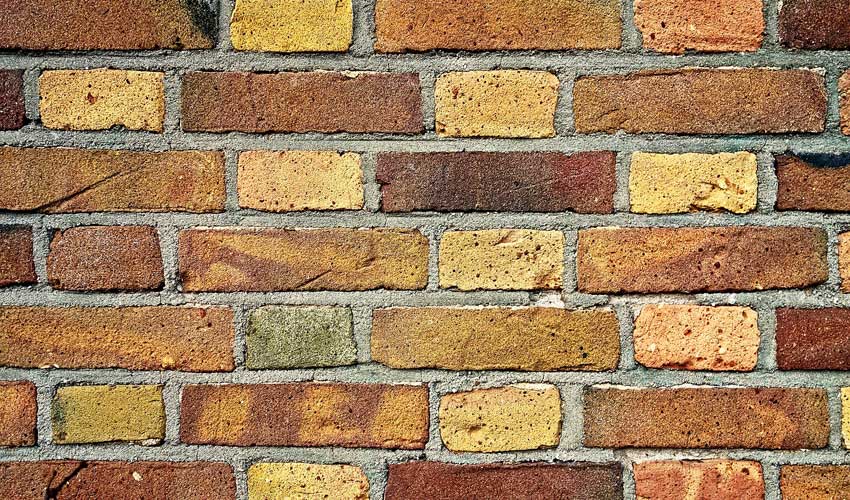Brick Mortar Is Important

Here’s a discussion that came up today on one of my projects. We were making a brick selection for the exterior of the house. The brick companies readily provide sample boards that have thin pieces of actual bricks, not just photos, for you to see. That’s very helpful, but the problem is that the cardboard sample boards do not have any mortar between the bricks. If there are sample boards with “mortar,” they use a synthetic mortar substitute because real mortar would break out on a board like this. It may or may not be the color of the mortar you will be using. Either way, the true, final color that your brick wall will produce is not readily apparent.
Why do I say this? The mortar in a brick wall comprises 15% to 18% of the final finished surface area. It’s color has a significant influence on the way the wall will look when it’s finished. Two walls, each built from the very same brick, but using different mortar, can “tint” the color of the wall. The mortar can also lighten, darken and even change the visual texture of the wall.
So when you select a brick, ask for some houses where that particular brick has been used. Then drive by and see how it looks in its final form. If one of the houses stands out as looking better than the others, find out what mortar was used and make sure your new house has the same mortar to ensure your end results will be what you envision.
Remember, brick is a “green” and “sustainable” building material.
I hope this information is helpful to you. You might want to get yourself a copy of my best-seller, Designing Your Perfect House. It is chockfull of valuable tips and advice that will save you many times the cost of the book on your house building or remodeling project. You might also like The Well-Centered Home: Simple Steps to Increase Mindfulness, Self-Awareness, and Happiness Where You Live. It will show you how to make your home a happy place.


Bill
not really throwing brickbats, but the piece on how “green” bricks are needs tighter expression to avoid confusion.Bricks are kiln fired and may be “hollow or extruded with holes (to improve keying and reduce the material in the unit or be soild usually with a depression called a frog (as in frog hollow). Bricks are best used internally in reverse brick veneer, or the inner leaf of 2 leaf cavity construction. mortar speciifications should preferably be soft lime mortars,unlesssoilheave or othert issues may cause cracking extruded bricks are not readily recyclable and even with soild pressed bricks recovery rates astill entail 5% or more loss of material. rendering brickworkmay look great but entails future likelihood of cracking and maintenance.the strike of joints and use of offset,indeneted or various brickbonds (including different coloured bricks for patterns etc, all can enhance appearance, but good amaterials and tardes are as you point out essential.rammed earth bricks and cast concrete bricks (or blocks as some folk call them) are also excellent and incorporate less embodied energy (think flue gases!) than fired bricks.
otherwise I like the line and lie of the text you give
regards
Andrew Inglis architect, melbourne, AUSTRALIA